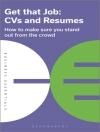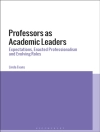Neither power nor morality but both. Moral power is what Sukuma farmers in Tanzania in times of crisis attribute to an unknown figure they call their witch. A universal process is involved, as much bodily as social, which obstructs the patient’s recovery. Healers turn the table on the witch through rituals showing that the community and the ancestral spirits side with the victim. In contrast to biomedicine, their magic and divination introduce moral values that assess the state of the system and that remove the obstacles to what is taken as key: self-healing. The implied ‘sensory shifts’ and therapeutic effectiveness have largely eluded the literature on witchcraft. This book shows how to comprehend culture other than through the prism of identity politics. It offers a framework to comprehend the rise of witch killings and human sacrifice, just as ritual initiation disappears.
Tabella dei contenuti
Acknowledgements
Preface
Introduction: The meaning of witchcraft
Chapter 1. Why magic works: Systemic healing
Chapter 2. The dancer: Gift and sacrifice
Chapter 3. Four forms of social exchange
Chapter 4. The witch: Moral power and intrusion
Chapter 5. Divination: A healing journey
Chapter 6. The ‘pure’ reason of witch killing
Chapter 7. Spirit possession: Incarnating moral power
Chapter 8. Magic, ritual and the senses
References
Index
Circa l’autore
Koen Stroeken is an associate professor of Africanist anthropology at Ghent University. He studies the moral cosmologies underlying medicine and social media.












